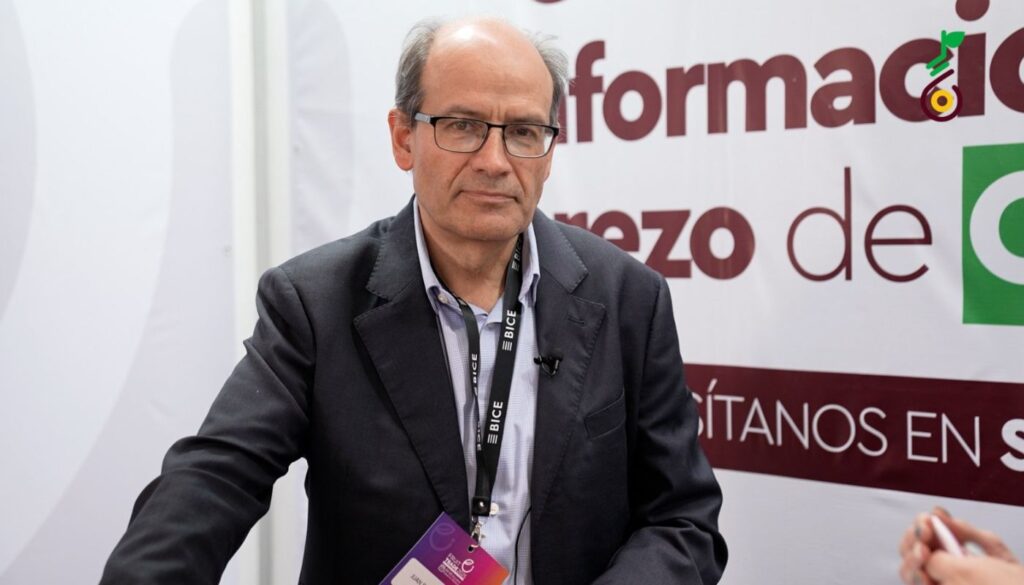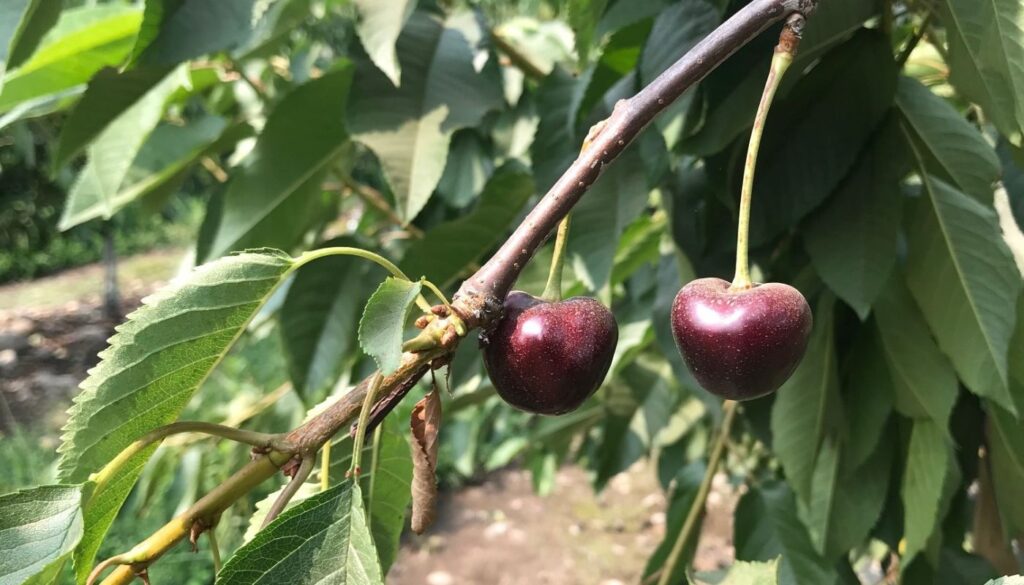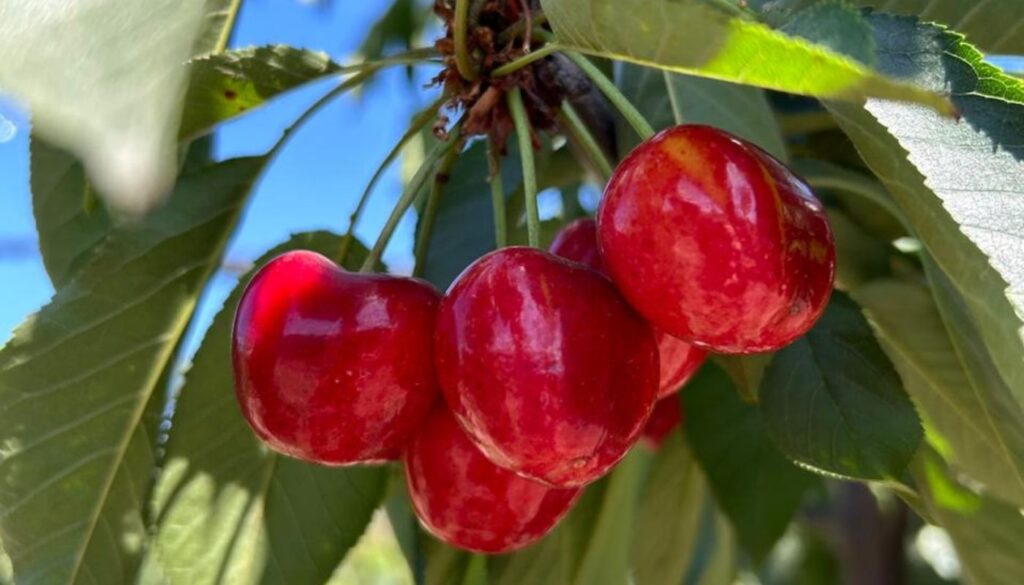Week by week, different interviews will be published, starting, on this occasion, with Jorge Astudillo, Production Manager of Agroindustrial Valle Arriba.

What is your assessment of the current cherry campaign?
"It was a season for us that confirmed many aspects that have
"Having been analyzed over time with respect to the north, I think that the most important thing that we can highlight is that necessarily, in order to be competitive and have a profitable business in the Ovalle area, we would have to harvest between week 42 and 44-45; this season was a bit atypical in that regard, because those of us who were accustomed to starting early in week 42-43, saw the harvest start date shifted by practically a week, however, we were able to shorten the periods after the harvest and, on average, this was a week to 10 days shorter than the previous season," Jorge Astudillo explained.
Was this repeated throughout the Ovalle area?
«Regarding the neighboring farms, most improved with respect to the harvest date compared to the previous season, many of them due to the management they began to carry out with respect to the dates of application of cyanamide, mainly; there were also experiences in some sectors with tunnel-type cover systems, also managing to advance up to 10 days the usual harvest date, which would also somehow allow establish systems that ensure early harvests in this area;, added Jorge Astudillo.
How did you see the logistics during this season?
«There were no problems in terms of logistics, the problem of the truckers' strike did not affect us, perhaps the last ones, the most backward ones who were harvesting Lapins in this area closer to December, I understand that they did encounter the problem of the truckers' strike, but the rest in general did not have problems; I also understand that there are hydrocooler systems that are already working here in the area which also allows for better treatment of the fruit, which also arrived in good condition at its destination and I think that is also important; as for labor, there were no problems either, in general there is good availability of labor», stressed the Production Manager of Agroindustrial Valle Arriba.

Expectation vs. reality: What were your biggest fears or challenges this season and what did you actually encounter?
«I think that the most important thing has to do with the dates of the beginning of the harvest. From the beginning, given the dates that the cyanamide is applied and the date that we had full flower, everything pointed to the fact that we could start before October 20, but reality showed us that this was not the case. We always depend on environmental conditions, no matter how much agronomic management we can do. If in spring we do not have the environmental conditions under control, we depend on the conditions in spring, and that was the case. We had a colder, more humid spring and that caused a delay in the start of the harvest.», Astudillo said.
What varieties did they export?
«The first variety to be harvested is Brooks, with very good quality, good size distribution, and a yield of over 10 tons per hectare, harvested in week 43. Then, practically at the end of that week, beginning of week 44, we already had Glen Red in China, at our destination, and then others appear, such as Santina, Frisco and Lapins. I would also like to highlight Rainier, which is a variety that also grows in this area. Although it is not an earlier variety than Brooks or Glen Red, it is the first Rainier in the country, so it obviously has a different value and I believe that the returns offered by this variety are very interesting. I understand that there were earlier harvests in Vicuña, with the variety that IFG is testing, which caused quite a stir. We were there on their field days and it could be a good alternative for this area. There were also harvests of traditional varieties, Early Burlat, which was harvested around October 15 in Tabalí, but that fruit went to the domestic market., detailed Agroindustrial Valle Arriba.
What is the main challenge for cherry production in Ovalle?
«The main challenge, I believe, is still understanding the processes that occur in the different varieties in our area, under the climatic context of Ovalle, the lack of cold, or the colder springs as well, we have to be able to ensure an early harvest, around week 42-43 as a start, until week 45, ideally, and in that way we can be more competitive, understanding that in terms of logistics we continue processing between the Metropolitan region and the O'Higgins region, so we have an extra trip for our fruit that implies a higher cost; we have to be able, then, to have this early fruit that offers better prices so that the returns are what one expects. Another challenge is to continue to learn about the phenological responses of each of the varieties, because new orchards continue to be planted in different areas of Ovalle, even a little further inland from the city, which will perhaps allow us to advance, if environmental conditions allow it, advance phenological states and have earlier fruit, that is also the expectation around what may happen in Ovalle, but always understanding that until now the area that starts the harvests is from Ovalle to the coast, mainly Tabalí; I think that is the main challenge, to get out early to ensure the commercial purposes and profitability that are expected., Astudillo announced.

Any final comments on this?
«I would like to thank Smartcherry for the opportunity to comment and learn about the situation of the industry everywhere, and we here in the north can contribute in some way information that may be of interest to other areas, because ultimately we are marking the beginning, in general, of the different stages of the season; and there is another thing, we too, given the conditions of climate change, perhaps what is happening today in Ovalle will happen in the medium term in the Metropolitan area or in the north of the O'Higgins region, we will find responses to management here in the north that will anticipate what may happen in the south in the future», said Jorge Astudillo.
And finally, Regarding the International Seminar on Early Cherries, is there a second edition?
«It will have its second edition in Ovalle, most likely in mid-August to be able to anticipate the business possibilities between the salesmen and the producers, because at that time we will be in full bloom and, in some way, we will know the behavior of the season from that phenological state that is so important, because certain dates are established, we can also know what the productive potentials will be and also the producers will have opportunities to learn about the alternatives and management options from full bloom onwards that are quite important, especially thinking about advancing the harvest date. The background will always be the same, we in the northern zone have little information, there is little development as well, little innovation and we want to take advantage of this seminar to be the place where we talk about cherries from the north, with the conditions and requirements that we have in particular, so when we have more information, obviously we will communicate it. Susttex Consulting is still responsible for this seminar since it did so brilliantly last season, so just that, I invite you to stay tuned for when we have new news regarding this seminar," concluded Jorge Astudillo, Production Manager of Agroindustrial Valle Arriba.










